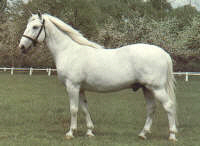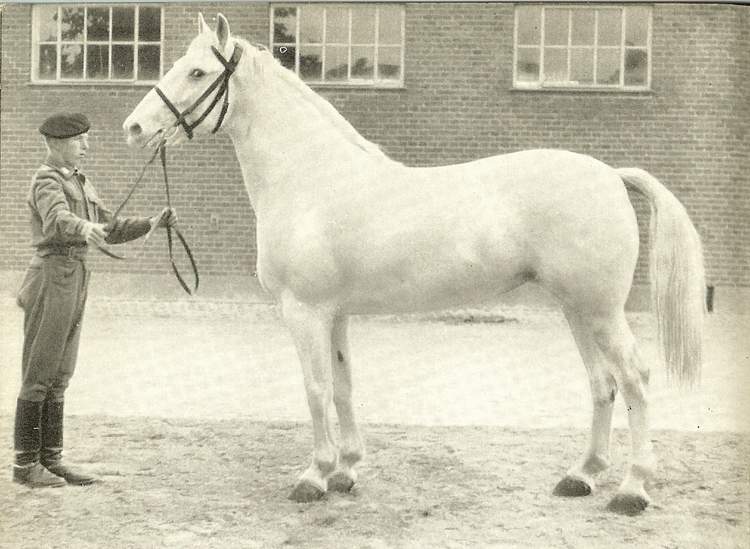

Kladruber


Introduction: If you have any comments or suggestions, please click here.
Names: Kladruber, Kladruby, Kladrub. I will probably use the name I am most familiar with, Kladruber, although I may switch to the shorter form, Kladrub, if I have to type it a lot! The breed was named after the Imperial Stud, originally at Kladrub in Bohemia.
Origin: From Czechoslovakia. First bred by Emperor Maximilian II in 16th century. A discontinued breed of large Spanish horses, once maintained at the imperial stud at Kladrub in Bohemia, developed from horses of Spanish and Italian stock brought into Austria in late Renaissance times. From the Kladruby has been derived the present-day Lipizzan horse of Austria.
Breeding: Czechoslovakia (formerly carriage horse of the Danube Monarchs). Colours bred separately; grey at Kladrub Stud, black at Slatinany Stud. The royal stud at Kladrub was founded in 1572 by the Emperor Maximilian II with Spanish and Italian horses. The foundation sire of the present-day greys was an Italian Pepoli stallion, in 1764. His grandsire, Generale, gave its name to the Kladruber grey line. Founder of the black strain was the stallion Sacramoso, imported in 1799 and belonging to the Spanish-Italian Polesina breed. The blacks still retain its name. During the monarchy, all horses from the stud went to Vienna as ceremonial horses to the royal stables. Breeding of both lines is now limited by the State.
Description: The chief characteristics of the Kladruby horses were their great height (68-72 inches), coloration (either black or white), Roman noses, arched necks, heavy crests, and the upright position of their necks when drawing the royal carriages. Their trotting gait was extravagant, and limited them to a speed of 2-3 mph.
Action: Walk stride not very long. Trot short and high-stepping, often with whipping action--Spanish walk with high knee action. Gallop, ponderous.
Body: Powerful, erect, crested neck. Short withers, low and rounded off. Back long and straight; beautifully curved, broad and rather long loins. Broad, straight, but short quarters. Tail set high and beautifully carried. Chest broad and deep. Shoulders rather straight, yet well muscled. Ample barrel.
Color: Black or gray.
Head: Large, long, heavy and sharply-chiseled head, with light forehead and unusually pronounced Roman nose. Large, prominent eyes with lots of white showing. Broad cheeks.
Hooves: Large and oblique.
Legs: Strongly muscled with strong, clean cannons, tendons and joints. Rather well let down hocks, long pasterns.
Size: 16-17 hands. 17 or 18 hands, according to one source. Another source said 17 to 19 hands.
Temperament: Fiery temperament, good-natured character.
Features: Late in maturing, long-living.
Uses: Used
in teams to pull state coaches, on farms and in dressage competitions.
Used extensively for harness and agriculture. They used to be driven in
teams of six or eight on State occasions. In 1916 the last sad duty of the
coal-black Kladruber horses from the Royal Stalls in Vienna, was to draw the
funeral coach of the Emperor Franz Josef.
Large, strong harness horse. Coach and draught horse of
proud appearance. Formerly Royal State Coach and parade horse.
Accomplishments:
Curiosities: Only one of several breeds in such a horse-minded country. Close by their stud farm at Slatihany is a fascinating museum devoted to the history of the horse. The stud itself once belonged to a family closely connected with the Grand Pardubice--a grueling steeplechase of international fame, that has been run almost every autumn for the past 150 years.
Profiles:
Conclusion: